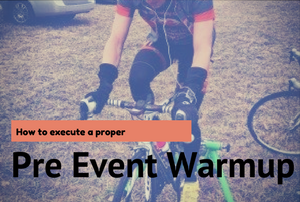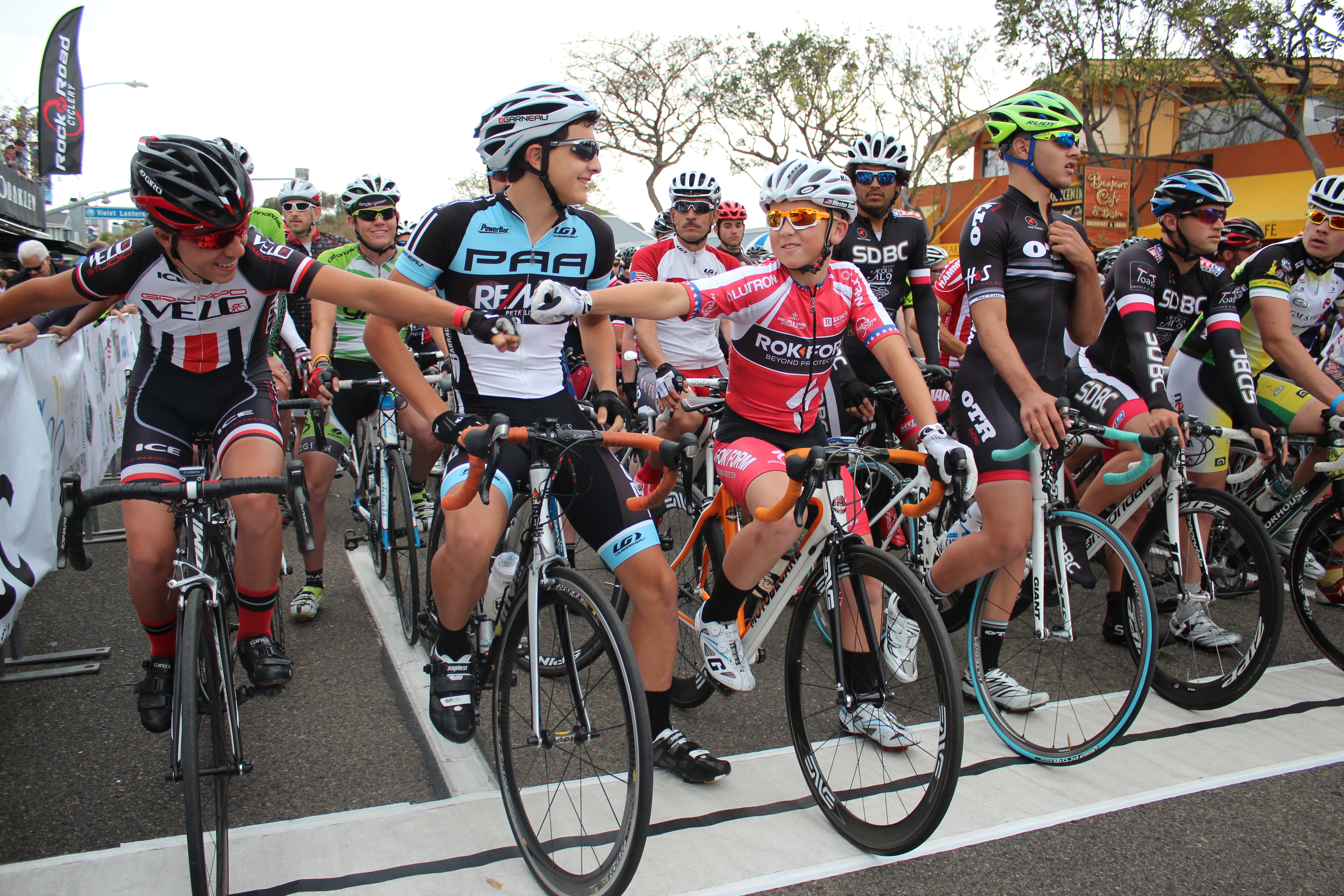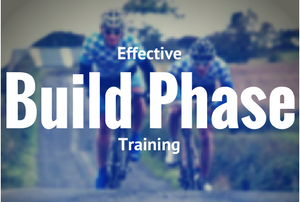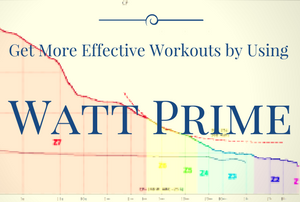
Have you ever arrived to a ride a few minutes later than you wanted and just jumped on your bike and rolled off with the group? Do you remember how you felt? I'd wager that you were probably feeling stiff, awkward and it took you a long time to actually warmup to where you were comfortable and powerful on the bike.
Knowing the consequences of “rolling cold” why do coaches and friends alike have to constantly remind each other to warm up before we ride? We all know better, and we shouldn't have to be asked the question “why should we warm up before we race (or even ride).”
It's staggering how often I hear this, and it amazes me that people still haven't accepted that they need to warm up before they hit the road in order to have a good performance. Even more amazing is the number of people who are under warming up, or not warming up to match the effort they are preparing for.
It's time to put a stop to this; we'll explore why we warm up, what it does for our body and then see an example warm up workout.
Continue reading “The Pre Race Warmup”

So you're thinking about racing a bike, but you're concerned about the cost.
You're not the only one, apparently.
Recently, an article in the UK based Telegraph caused a little bit of a stir in the cycling world, claiming that the cost of racing was approximately £25,000. £25,000!! Adjusted to USD, that's around $39,000! That's a salary for a lot of people!
And that's completely insane.
There's no earthly reason racing a bike needs to cost that much. In fact, if you read other articles by the same author, you get a different impression: the author is racing at an elite level, attempting to recapture a lost opportunity of his youth. He's not starting off racing a Cat 5 criterium, or a weekend stage race where you're competing against other guys who are coming out to have a little fun and maybe sprint for a pair of tires. We're talking two different worlds here.
But the article did get me thinking about what IS the cost of racing a bike? And if you wanted to start racing a bike today, what would you need to lay out in terms of dollars and cents. That's what I'll explore in today's podcast, along with some helpful tips to get you ready to race for the first time.
Click through for a breakdown of what it takes to race on the elite level, and what you need to race on the local level:
Continue reading “The Cost Of Bike Racing? (Podcast #56)”

Do you wish you could get more cycling prowess out of your build phase training?
So do a lot of riders.
Here's a short backstory: A while back I released a podcast discussing how you can get the most out of your base training by throwing out much of the old school rhetoric and focusing on new school science. That podcast has become one of my most popular podcasts to date, sparking questions about everything from workout frequency to using High Intensity Training to rocket your fitness up during the base phase. It didn't stop with the base phase either: people started asking how to turbocharge their build phase training too.
So by popular demand, this time, I'm going to tackle the build phase of your training plan. Again, the name of the phase sort of gives away the goal behind it: to build fitness in an exponential way. However, fitness is a tricky thing: there's general fitness (for you power meter users, that's the CTL on the performance management chart) and there's situation specific fitness such as climbing ability, sprinting ability, 3 minute power, etc etc (which can all be tracked if you're training with power). Many athletes are happy with going out and doing the same old rides, watching their “fitness” (really, they're seeing an increase in CTL) steadily climb. Then they register for a fondo, race or event and fail to meet their expectations.
Why?
Because they didn't train their weaknesses, nor did they build specific fitness to conquer their goals.
In this episode of the Tailwind Coaching Podcast, we'll cover that and more. Show notes and links are available after the jump:
Continue reading “Effective Build Phase Training (Podcast #55)”
There are times when you'll find yourself in unfamiliar company, either on a group ride, a charity ride, a fondo or a race. You'll be surrounded by people you don't know, you're not familiar with their handling skills and you're not even sure if they are comfortable riding in a group. In situations like these, you'll need to be on high alert and ready to defend your space and yourself. Let's face it: if you're stable, sure afoot (awheel?) and not afraid of contact while you're riding, you're actually pretty hard to knock over and crash out. If you're nervous, twitchy and afraid of contact (I.E. you panic and steer away from the guy bumping you) then you're going down sometime sooner rather than later.
Protect Yourself By Protecting Your Bars
Defending yourself includes the space immediately around you and especially around your handlebars. Your bars are your lifeline to your bike: if someone knocks them or takes them out, you lose complete control of your machine and are significantly more prone to crashing. If you're always defending your handlebars, you'll be a lot safer, you'll be a lot more stable and steady, a lot more confident and you'll be a lot less prone to going down.
In order to defend your space and your handlebars, follow these simple tips (and practice them regularly with your regular group ride buddies and teammates):
Continue reading “Staying Safe In A Group”

What is W’?
W' is the brain child of Dr. Phil Skiba. He describes W' as the amount of work (in joules) that an athlete can perform ABOVE their Critical Power. Critical Power, or CP for short, is essentially the power a muscle can provide without fatiguing significantly. It is similar to functional threshold power, but there are a few differences on the physiological level. For the purpose of this podcast, we'll consider CP and FTP to be the same since they are numerically quite similar.
Essentially, W' is a measure of energy, specifically a measure of Anaerobic Work Capacity, or how much anaerobic effort an athlete can put out before fatiguing to exhaustion. If you look at the chart above, you'll see a black line drawn through the power curve. Although this represents an effort during a workout, it perfectly illustrates W'. Everything below that black line would be considered aerobic work that can go on for a LONG time. Everything above that line would represent W'.
As a clearer description, Dr. Skiba has likened W' to a battery in the past. He has suggested that each effort above CP/FTP causes your battery to drain a little bit. Once you let off the gas and drop below your CP/FTP, your battery begins to recharge. Unfortunately, the recharge is slower than you think, especially the harder you work UNDER your CP/FTP. So it follows that if you burn your battery up, and then continue to perform just below your CP/FTP, your battery will recharge VERY slowly. All the energy that would go into recharging your battery is going to power your performance.
Once you've expended all of your W', it's game over, you blow up and you're done for the time being.
There are some hypotheses about what causes W' to recharge and what happens when we expend all our W'. Those are for another podcast, where we'll talk about how to possibly improve W' recharging, but for now, we'll deal with the practical application of W' using Golden Cheetah.
Check out the video podcast for some information on W' and how you can use it to interpret your training (assuming you're training using something like a Stages Power Meter.)




